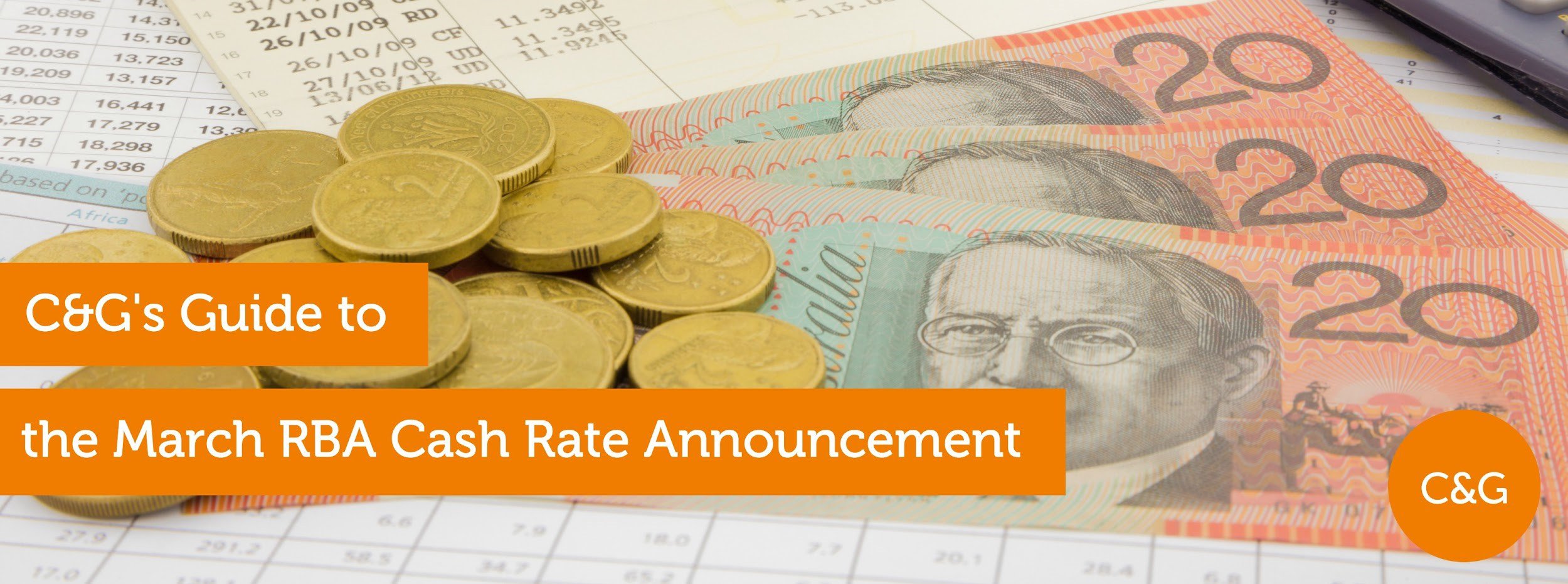C&G’s Guide to the Reserve Bank of Australia Cash Rate March Announcement
It was business as usual at the Reserve Bank of Australia board meeting this week, with rates on hold for the seventh month in a row. Today, C&G breaks down what this could mean for the property market and wider economy.
Dr Philip Lowe announced on Tuesday afternoon at 2.30pm, that the cash rate would be left on hold once again, at its all-time-low rate of 1.5%. The stall was widely predicted by economists, with major changes not expected at least until May, when changes to international interest rates could take effect.
The ‘wait and see’ approach seemed to be the continuing theme at Tuesday’s board meeting, with the Governor once again justifying the hold against the need for a boost in inflation, and the inability to raise or cut the rate for fears of dramatic shifts in the housing market. A cut would potentially fuel the existing fire of demand in capital cities, while a rate hike could put pressure on the Australian Dollar and affect inflation, which remains at a critical low.
In the real estate market, out-of-cycle interest rate increases from lenders continue to prevail in an attempt to offset the low cost of borrowing that’s also fuelling demand. Existing home owners are urged to review their current mortgage situation with their broker, to ensure their product is still in line with their financial situation. With interest rates set to rise, those with mortgages should be prepared for variable rates to jump considerably in the coming months.
The spotlight is on first home buyers this week, also urged to take rate increases into consideration when calculating their budget for monthly repayments. Coupled with the recent announcement on stamp duty exemptions as of July 1, there’s uncertainty ahead for those looking to purchase a first home. And with the exemptions set to fire up demand in an already-hot market, budgets and borrowing power may need a rethink. This is, of course, in line with the changes to stamp duty and the possibility of higher rates – and higher prices as a result of demand spikes.
Investors continue to be challenged when it comes to governmental regulations, with a potential vacancy tax to be applied to un-tenanted properties. This could open up the rental market, and ease demand in investor-heavy areas, signalling a need for a broker check-in if you’re a landlord. Should the rental market ease, demand may fall more in line with supply, reducing average weekly rental yield and thus, your income. Prepare for lending rates to rise a few percent and income to fall a few percent to avoid ‘rate shock’, and ensure you’ll still be able to make your repayments.
It’s an uncertain time for the property market, but the Bayside region is still ripe with opportunity for buyers, investors and vendors. Make an appointment with Chisholm & Gamon’s friendly team to discuss the right time to buy and sell in the current climate.

